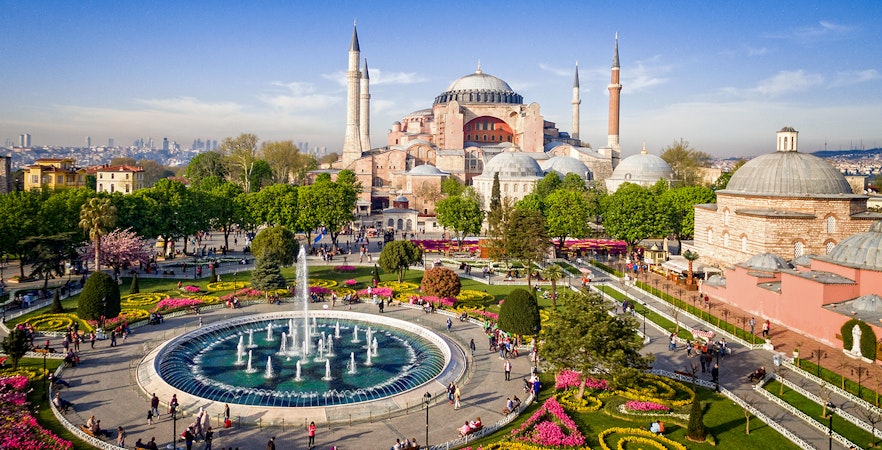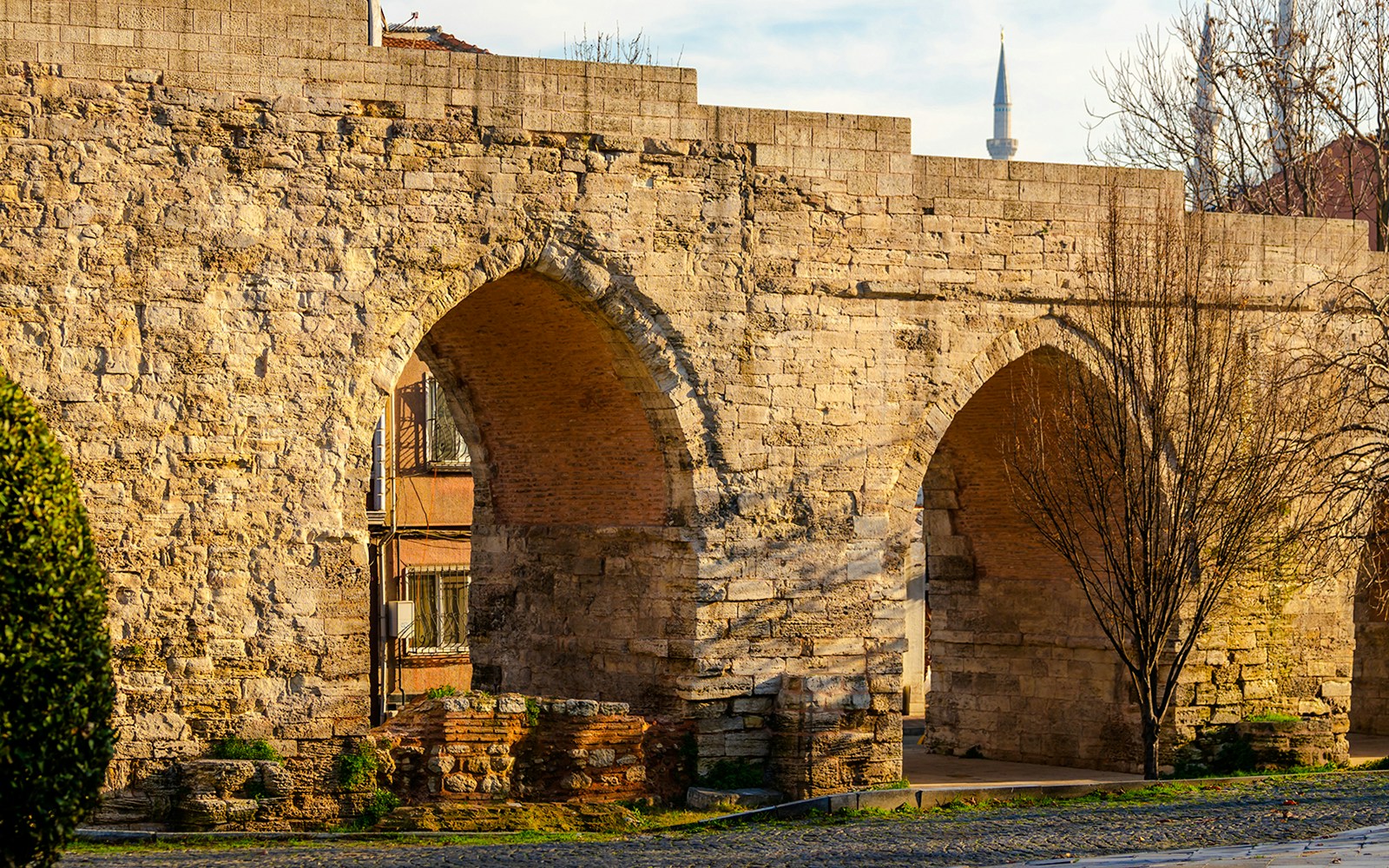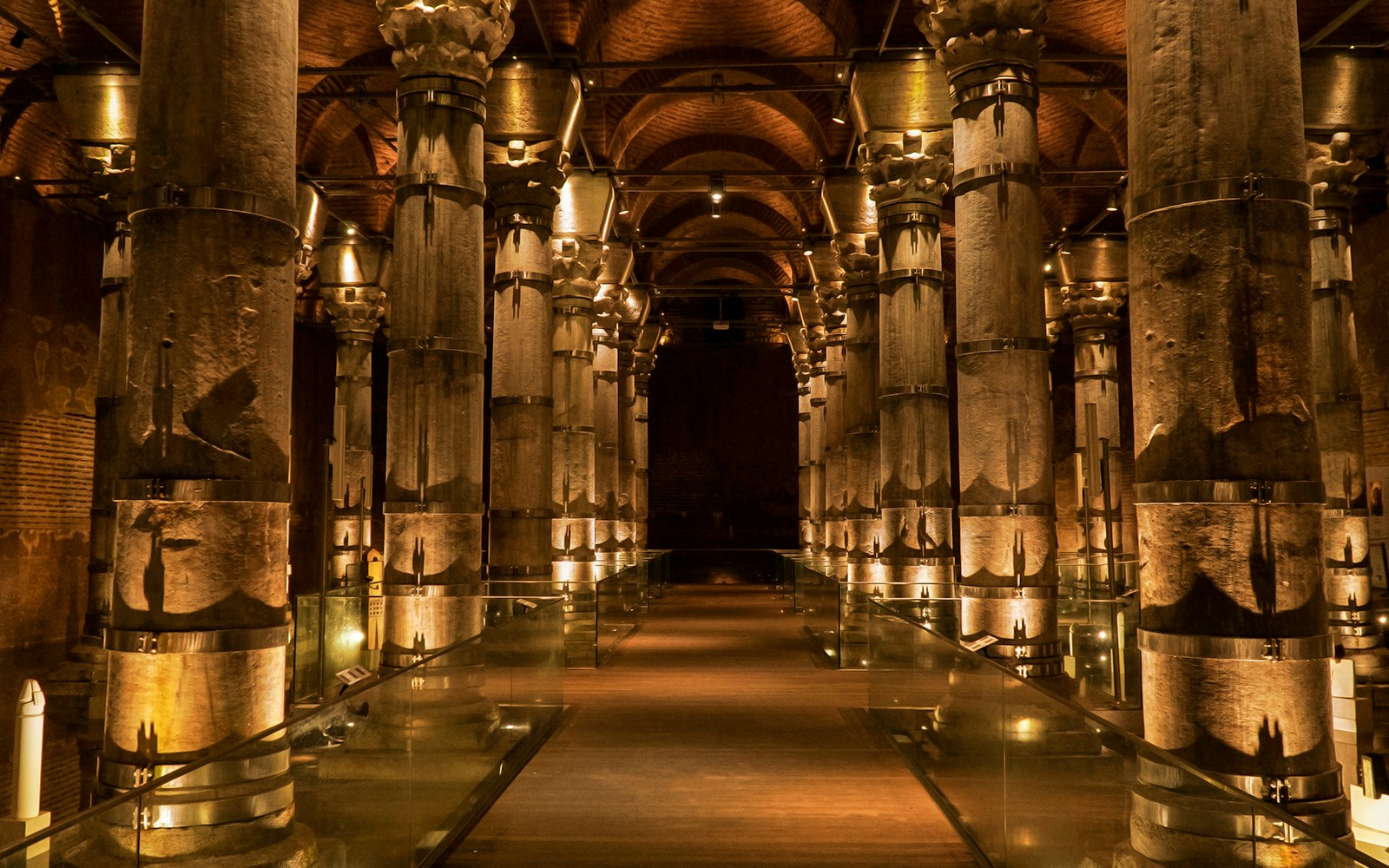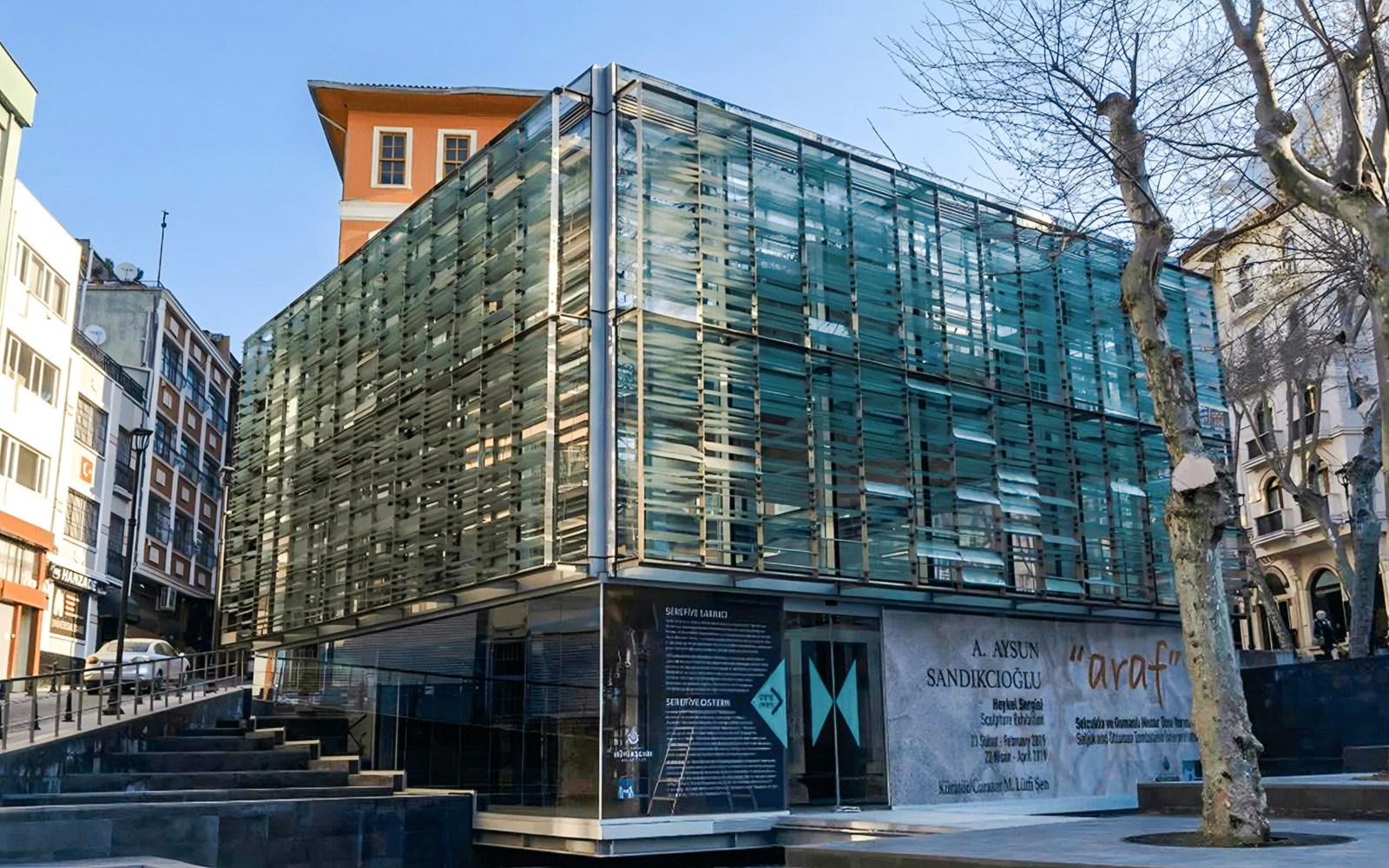The much talked about marble columns inside are likely made from Proconnesian marble, imported from the island of Marmara.. Each column was carefully repurposed from older Roman buildings, making the cistern an impressive example of ancient architectural recycling.
Your ‘checklist’ of things to see and do at Theodosius Cistern
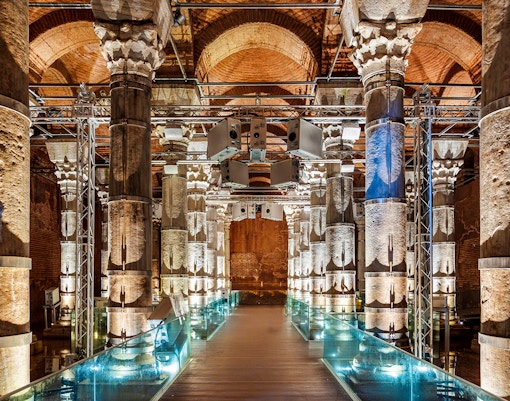
Ceiling to floor marble columns
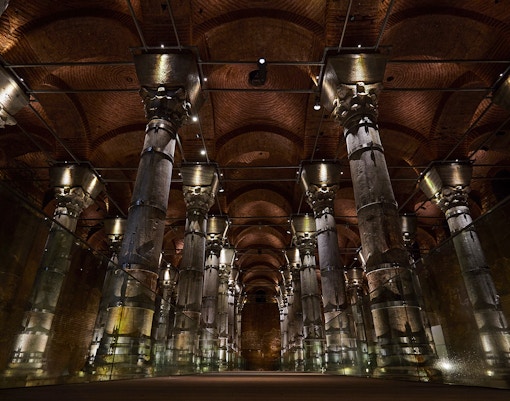
Vaulted ceilings and walls
The vaulted ceilings are constructed from stone and brick, arranged in interlocking arches that distribute weight perfectly. This engineering allowed the cistern to remain stable for over 1,500 years, even under constant water exposure. Look out for the 45 brick sail vaults resting on a grid of 32 marble columns, each topped with Corinthian capitals. As you walk through the space, you’ll see modern conservation techniques like steel reinforcement rings around some capitals and a floating timber walkway above the original floor.
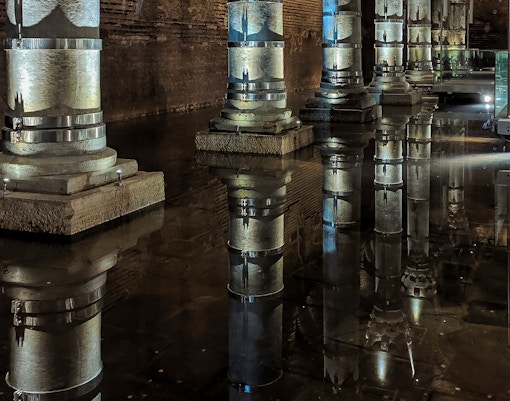
Pools and reflections
At the base of the columns lie a hint of movement: the pools. Stand in front of these water bodies and look at the reflections of the intricate carvings on the ceilings. The stillness of the water also amplifies sound, making your whispers echo.
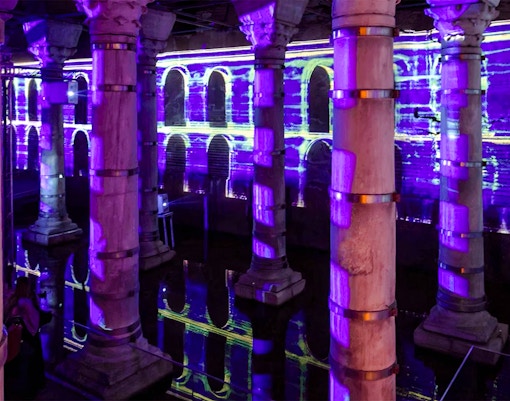
360° light and video mapping show
If there’s one thing you should absolutely not miss at the cistern, it's the light and video mapping show. Advanced projection mapping truly transforms the cistern into a living narrative. As you walk around, digital images are projected onto the ancient walls, merging modern visual artistry with centuries-old architecture.
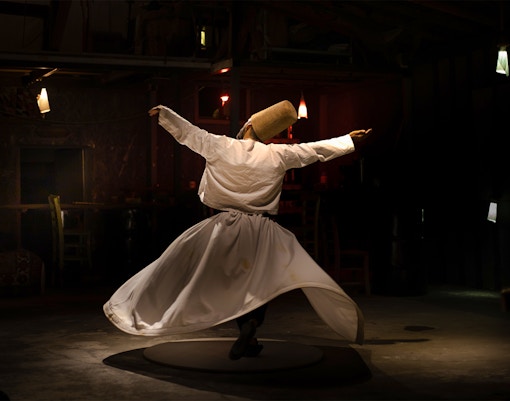
Cultural events
Theodosius Cistern occasionally hosts art exhibitions, musical performances, and cultural programs that take advantage of its unique acoustics and dramatic ambiance. The combination of vaulted ceilings, reflective pools, and soft lighting creates an unforgettable setting, allowing visitors to experience history as a living environment rather than just a static monument.
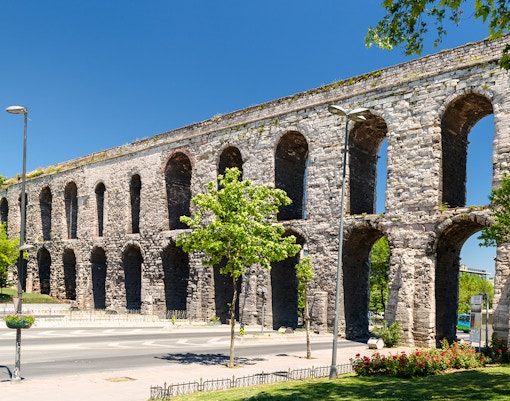
The Aqueduct of Valens
Just about 500 meters outside the Theodosius Cistern stands the Aqueduct of Valens, which stretches over a kilometer within the city and connects multiple water sources from beyond Istanbul’s walls. Today, as you explore, the parts of the Aqueduct that you see above ground is a visible reminder of the hidden water network that once ran beneath the city.
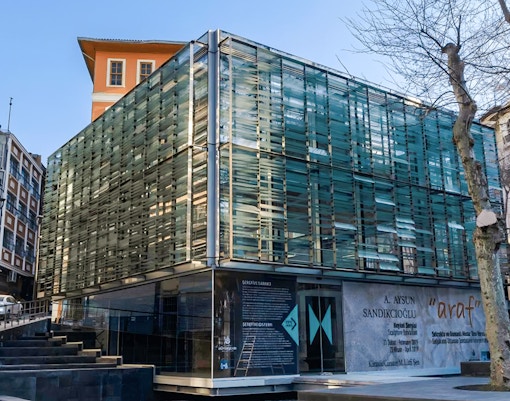
The glass pavilion entrance
At street level, the cistern is hidden behind a modern glass pavilion, a cube of clear panes. Its sleek, contemporary design sharply contrasts with the ancient underground reservoir it protects. The plaza around the pavilion outlines the shape of the cistern, hinting at the historic space below. Once inside, the modern world fades as you descend the stairs into shadowed chambers, where you are instantly transported back in time.

Visit the microscope exhibit in the gift shop
As a final check of your itinerary, be sure to browse the on-site gift shop for souvenirs, books, postcards, and other items. Don’t miss the old cistern tiles under magnification, where slow-motion displays reveal intricate details giving you a closer, more intimate look at how the cistern was built.
